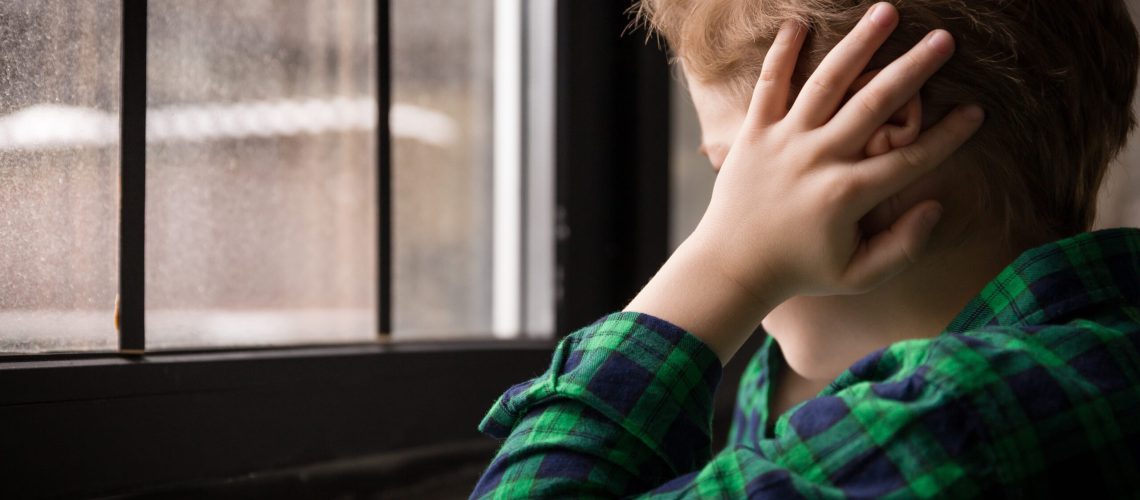
Fact: people who experience trauma in childhood are three times more likely to struggle with a mental disorder in adulthood. Also fact: it is possible to heal from childhood trauma and to not have it overrun your life. Trauma is not a lifelong diagnosis.
Defining Childhood Trauma
Childhood trauma refers to any experience during childhood that is emotionally or physically distressing and has have long-term negative effects on a person’s mental and physical health. Note that it us not the incident that defines the trauma, but rather the person’s reaction to that incident. Two people could experience the exact same event but respond internally to it in a completely different way.
The events that can cause childhood trauma vary widely and depend on factors such as culture, community, and individual circumstances. Some common types of childhood trauma include:
- Abuse: Physical, sexual, emotional, or psychological abuse by a caregiver or other person in authority over the child.
- Neglect: Lack of adequate care, supervision, and support from a caregiver.
- Attachment disorder: a condition where a person has difficulty forming healthy and meaningful relationships with others due to disruptions in early childhood attachment patterns.
- Family Dysfunction: Living in a home with frequent conflict, violence, substance abuse, mental illness, or incarceration of a family member.
- Natural Disasters: Traumatic events that can impact entire communities, such as hurricanes, floods, and earthquakes.
- Medical Trauma: Serious illness, injury, or medical procedures that are painful or frightening for a child.
The severity and duration of the traumatic experience, the child’s age, and whether there is emotional support available directly afterwards, all have an impact on the lasting effects of childhood trauma.
The ACE, or Adverse Childhood Experiences, is a measure that assesses the extent to which a person has experienced various types of childhood adversities, including abuse, neglect, and family dysfunction. The ACE measure has become increasingly important in the field of psychology and mental health as it has been linked to a range of negative outcomes, including physical and mental health problems, substance abuse, and even premature mortality.
What Makes it hard to Move On
There are several factors that make it difficult, but certainly not impossible, to move on from childhood trauma. One of the main factors is that trauma can alter the way the brain functions, particularly in the areas of emotion regulation and memory. Trauma can also impact a person’s sense of safety and trust in others, which can make it hard to form and maintain healthy relationships. People who have experienced trauma may also have difficulty expressing their emotions or talking about their experiences, which can hinder the healing process.
Trauma can shape a person’s identity. When someone experiences trauma at a young age, it can shape the way they see themselves and the world around them. They may come to believe that they are fundamentally broken or flawed, or that the world is an unsafe and unpredictable place. These beliefs can become deeply ingrained and difficult to change, even when a person is aware of the negative impact of those beliefs.
Additionally, traumatic events can trigger powerful and persistent emotional reactions, such as fear, anger, and sadness, which can be difficult to manage and control. These emotions can be triggered unconsciously and create negative thought patterns that reinforce the trauma, making it challenging to break free.
Trauma can also impact a person’s relationships with others, which can further complicate the healing process. People who have experienced trauma may struggle to trust others, and they may isolate themselves from loved ones as a result, or unwittingly push them away. This isolation can exacerbate feelings of loneliness, sadness, and hopelessness, making it even harder to move on.
How to Help Heal Childhood Trauma
There are several psychotherapies that are specifically designed to help individuals who have experienced trauma. Here are some of the most common ones:
- Trauma-Focused Cognitive Behavioral Therapy (TF-CBT): TF-CBT is a short-term therapy that helps children and adolescents who have experienced trauma. It combines cognitive-behavioral therapy with trauma-focused techniques such as exposure and desensitization.
- Eye Movement Desensitization and Reprocessing (EMDR): EMDR is a therapy that helps individuals process traumatic memories by using a structured approach that involves bilateral stimulation, such as eye movements, while recalling the trauma.
- Mindfulness-based interventions: Mindfulness-based therapies, such as mindfulness-based stress reduction (MBSR), can help individuals to develop coping strategies for dealing with the symptoms of trauma, such as anxiety or depression.
- Internal Family Systems (IFS): IFS therapy is a form of psychotherapy that views the human psyche as composed of different “parts,” each with its own unique set of thoughts, emotions, and behaviors. IFS typically involves a combination of talk therapy and visualization techniques, such as guided meditations, to help clients connect with their internal parts and develop a deeper understanding of their inner world.
- Narrative Exposure Therapy (NET): NET is a therapy that helps individuals process their traumatic experiences by telling their life story in a structured way that includes their traumatic experiences. The therapist helps the individual connect the trauma to the larger context of their life story.
It’s important to note that not all therapies work for everyone, and it’s essential to find a therapist who is trained and experienced in treating trauma to determine the best course of treatment for you.
Moving on from childhood trauma is not an easy process, but it is possible with the right support and resources. If you are struggling with the effects of childhood trauma, it is important to seek professional help. A counsellor can work with you to develop a treatment plan that is tailored to your specific needs and goals. With time, patience, and the right interventions, you can begin to heal from your past and create a brighter future for yourself.



